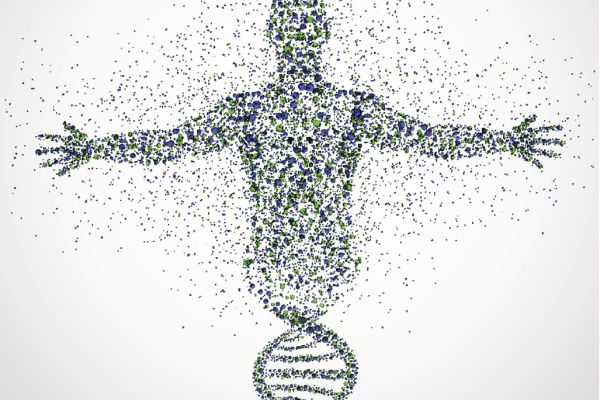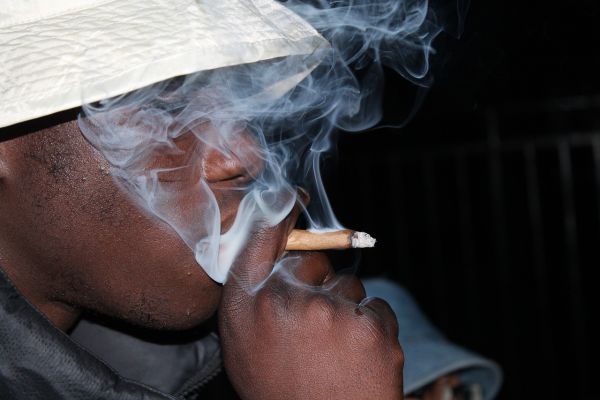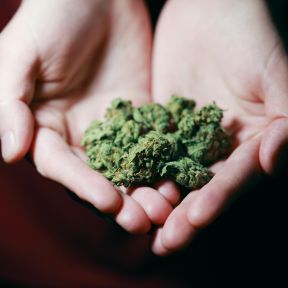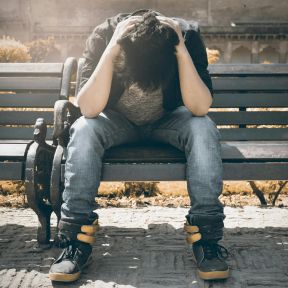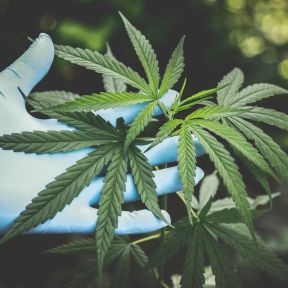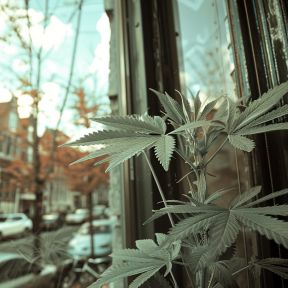
Cannabis
Cannabis—referred to by its many names of marijuana, pot, weed, etc—is a psychoactive drug derived from the cannabis plant. Its relationship to mental health is deeply complex, as it can help some people while harming others. As the drug is legalized in more places, particularly in the U.S., the mental health implications will become increasingly important to observe, understand, and address.

For centuries, people have used marijuana for mental health reasons. Some people benefit from cannabis use, as it helps them feel calm, fall asleep, or relieve their pain, among other benefits. However, other people—especially those who start using cannabis early and those who use heavily and frequently—the drug exacerbates mental health problems or, in some cases, gives rise to new disorders.
Research has long documented a connection between cannabis and psychosis. Yet the connection is complex: Does cannabis cause psychosis? Are people with psychosis more likely to use cannabis? Do genetics underpin both cannabis use and psychosis? Recent studies have been teasing apart these threads and discovering that cannabis elevates the risk of psychosis.
Those with a higher risk of developing psychosis include daily cannabis users, people who use cannabis with high concentrations of THC, and those with a family history of psychosis.
It should be noted that this experience is relatively rare; many people who try or use marijuana don’t develop psychosis. However, THC concentrations have been increasing and cannabis has been legalized in more places, which may lead rates to rise.
Some individuals experience acute psychotic symptoms that are time-linked to ingesting marijuana. This is called cannabis-induced psychosis, and symptoms include delusions, hallucinations, paranoia, dissociation, a sense of grandiosity, and other perceptual and behavioral changes.
Psychotic symptoms often resolve within a few days or a week. However, research indicates that a significant percentage of these people later develop a psychotic illness. For those who develop acute psychosis lasting several days, the risk of developing schizophrenia or bipolar disorder is high, at nearly 50 percent.
In the DSM-5, cannabis-induced psychosis falls under the diagnosis of substance-induced psychotic disorder.
For more, see Substance/Medication-Induced Psychotic Disorder.
Cannabinoid hyperemesis syndrome (CHS) is a syndrome of regular marijuana use that leads to repeated and severe vomiting. The syndrome only affects consistent, heavy marijuana users, and even among that cohort is rare. CHS is caused by the effects of THC acting on the digestive tract. CHS is treatable but can require several months of abstaining from cannabis.
Ironically, marijuana can sometimes treat nausea and vomiting, as in the case of chemotherapy patients. However, cannabis, like other drugs, can have biphasic effects—low doses can produce one effect, while high doses produce the opposite effect.
Science shows that cannabis has relaxing and sedative effects, and it can help people fall asleep. Research demonstrates that cannabis shortens the time it takes to fall asleep, both for people with sleep problems and without sleep problems.
The effects of cannabis on sleep are due to the chemicals cannabinoids and terpenes. Strains of marijuana that benefit sleep are composed of higher CBD and lower THC concentrations.
However, using cannabis for sleep can change one’s sleep cycle, and come with side effects.
An imbalance in the transmission of dopamine is thought to underlie the symptoms of ADHD. People with ADHD have fewer dopamine transporter proteins in their basal ganglia, leading to a build up of dopamine. THC in marijuana leads to less dopamine in the brain, which may explain why people with ADHD are about three times more likely to use cannabis. They may use marijuana to assist with sleep, improve a depressed mood, or reduce their need for ADHD medication.
However, there is currently no empirical support for marijuana as a treatment for ADHD.
Cannabis may lead to short-term relief but a heightened risk of dependence and exacerbation of ADHD symptoms in the long-term.
There is little research on the safety and effectiveness of cannabis for anxiety, according to a review study. Anecdotally, some people use marijuana to relax when they feel anxious, and it is effective for them.
However, if that’s the case, it’s important to consider whether marijuana provides a short-term solution but long-term problems. For example, while the drug can reduce anxiety and stress, once the effect wears off, some people experience an increase in anxiety. Furthermore, regular marijuana use can slowly ramp up anxiety between uses.
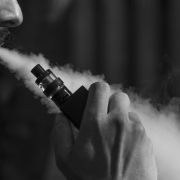
Most people who use marijuana do not become addicted to it. However, the drug can be addictive, especially for frequent, heavy users. An addiction to marijuana is called Cannabis Use Disorder (CUD), and it is a diagnosis in the DSM-5.
Many people smoke cannabis without becoming dependent on it. However, research suggests that 13 percent of people who try cannabis even once by age 14 eventually develop an addiction. Among those who use cannabis regularly, between one-fifth and one-third develop CUD.
An addiction to marijuana may be becoming more common, because concentrations of THC have increased substantially over time. Research shows that higher concentrations of THC lead to higher rates of addiction and mental health problems; higher-potency marijuana may be four times more addictive than lower-potency marijuana.
A colloquial way to think about the hallmarks of cannabis use disorder are through the three Cs: cravings (a strong desire to use the drug), consequences (negative consequences of use), and loss of control (continuing to use despite the consequences). Tolerance and withdrawal are two key criteria as well.
The DSM-5 classifies CUD as a problematic pattern of cannabis use leading to clinically significant impairment or distress, as manifested by at least two of the following, occurring within a 12-month period:
• Cannabis is often taken in larger amounts or over a longer period than intended.
• There is a persistent desire or unsuccessful efforts to cut down or control cannabis use.
• A great deal of time is spent in activities necessary to obtain cannabis, use cannabis, or recover from its effects.
• Craving or a strong desire or urge to use cannabis.
• Recurrent cannabis use resulting in a failure to fulfill major obligations at work, school, or home.
• Continued cannabis use, despite having persistent or recurrent social or interper­sonal problems, caused or exacerbated the effects of cannabis.
• Important social, occupational, or recreational activities are given up or reduced because of cannabis use.
• Recurrent cannabis use in situations in which it is physically hazardous.
• Cannabis use is continued despite knowledge of having a persistent or recurrent physical or psychological problem that is likely to have been caused or exacerbated by cannabis.
• Tolerance, as defined by either of the following: 1. A need for markedly increased amounts of cannabis to achieve intoxication or desired effect. 2. Markedly diminished effect with continued use of the same amount of cannabis. 3. Withdrawal, as manifested by either of the following: The characteristic withdrawal syndrome for cannabis; cannabis is taken to relieve or avoid withdrawal symptoms.
For more, see the diagnosis dictionary.
Withdrawal refers to physical symptoms that result from abstaining from or reducing the amount of a drug someone has become dependent on. For cannabis, those symptoms can include aggression, anger, irritability, anxiety, insomnia, depression, restlessness, headaches, vomiting, and abdominal pain.
Dependence and withdrawal don’t occur for everybody who tries marijuana. A meta-analysis shows that among regular or dependent cannabis users, 47 percent experience withdrawal symptoms.
Withdrawal symptoms are not dangerous or deadly, but they should be addressed by a medical professional.
Evidence-based therapies for CUD include cognitive behavioral therapy (CBT), motivational enhancement therapy (MET), and contingency management (CM). CBT involves identifying triggers for cannabis use and developing coping skills to prevent triggers from leading to use. MET involves a therapist employing empathy and reflective listening to guide patients to change their behavior. CM offers incentives such as cash or vouchers to positively reinforce abstinence from cannabis.
A meta-analysis linked CBT and MET to a one-quarter to one-third reduction in cannabis use over an average of four months. Combinations of these therapy types may be even more effective.

Cannabis is comprised of two components: tetrahydrocannabinol (THC), the psychoactive component, and cannabidiol (CBD) which is not psychoactive. Marijuana produces effects on the brain by activating cannabinoid receptors, which in turn activate the brain’s reward system.
Cannabis is surprisingly diverse—it is categorized as a depressant, a stimulant, and a hallucinogen due to the wide variety of effects it can produce. (It is not classified as an opiate.) Cannabis can slow brain functions and lead to relaxation and sleepiness, as depressants do, but it can also speed up brain functions and lead to anxiety or paranoia, like stimulants, and lead to altered perceptual experiences, like hallucinogens.
Scientists don’t have a complete understanding of what happens in the brain during a high, but the process involves the brain’s reward pathways. A recent neuroimaging study examined the effects of THC in healthy young adults with a limited history of cannabis use. Subjects who received THC demonstrated greater connectivity between two regions in the reward system—the right nucleus accumbens and the medial prefrontal cortex. The higher subjects rated themselves, the greater the connectivity. The THC in cannabis may stimulate cannabinoid receptors on GABA neurons, turning off the continuous inhibition of dopamine and leaving users feeling a euphoric high.
